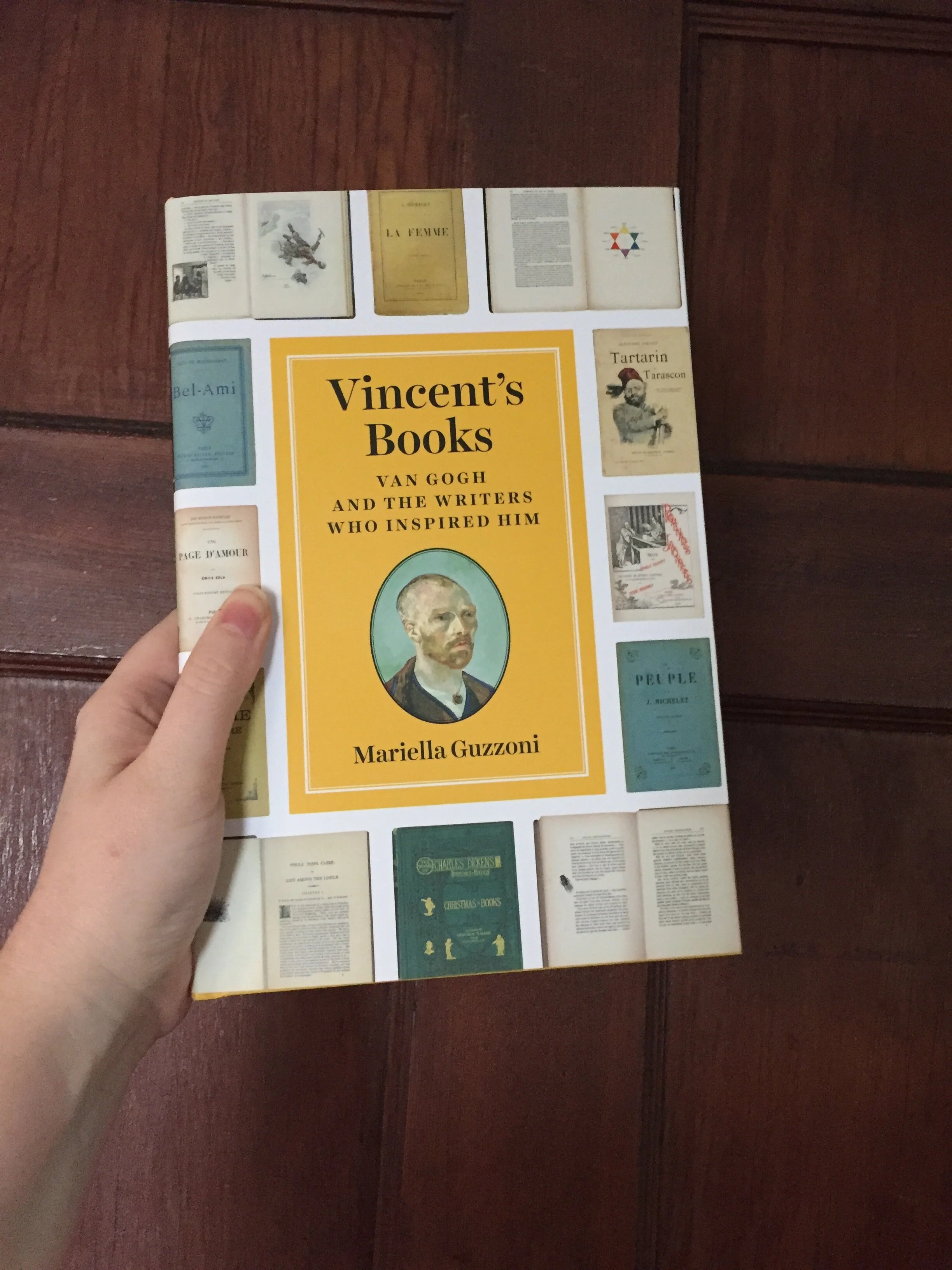Hot Off the Shelf: Desert Notebooks: A Road Map for the End of Time by Ben Ehrenreich
[image description: The book cover for Desert Notebooks by Ben Ehrenreich. The foreground has palm trees in shadow and the background is bright blue with white and yellow circular lines indicating it’s a time-lapse photo of the stars at dusk.]
Disclaimer: I received a free copy of this book from the publisher in exchange for an honest review. As always, I only review books I truly enjoyed.
If you ask me my favorite book genre, I’d have a hard time giving you a straight answer because many of the books I enjoy most bend and blend genre. As a creative nonfiction writer myself, I especially love it when nonfiction books do this. For a long time, I predominantly read fiction because I thought nonfiction had to be straightforward and boring. It doesn’t, and Desert Notebooks by Ben Ehrenreich is an ideal illustration of just how fascinating and multi-faceted creative nonfiction can be.
First, a quick synopsis from Goodreads:
For fans of Robert Macfarlane or Elizabeth Rush, National Magazine Award winner and The Nation columnist Ben Ehrenreich layers climate science, mythologies, nature writing, and personal experiences into a stunning reckoning of our current moment and our all-too-human urge to grapple with apocalypse.
A book about the literal and figurative end of time and what that means for us as conscious beings, Desert Notebooks looks at how both the unprecedented pace of destruction to our environment and our increasingly unstable global socio-political institutions have led to an existential crisis orders of magnitude greater than any humankind has confronted before. As inhabitants of the Anthropocene what might some of our own histories tell us about how to grapple with apocalypse? And how might the geologies and ecologies of desert spaces inform how we see and act towards time?
Employing an elegant, discursive style that interweaves memoir with science writing, creation myths, and history, National Magazine Award winner and The Nation columnist Ben Ehrenreich uses the desolate landscape of the American desert —the main locales for the book are Joshua Tree and Las Vegas— as a springboard to examine how we formulate our concepts of time and what it means to confront the looming apocalypse. Desert Notebooks is a moving confrontation with Deep Time and a meditation on landscape in the face of climate change. Faced with an uncertain future, Ehrenreich argues there is comfort in reflecting on the role we humans have played in our own demise in the past. The difference is that this time the clock may finally be running out for good.
See what I mean about the genre-blending? That’s what I’m here for.
This is the kind of book you savor, not fly through. I’m tempted to call it stream of consciousness because of how smoothly the narrative flows but to call it that would imply it’s thrown together haphazardly, which is not the case. Desert Notebooks is clearly well-researched. How else could you cover and connect such a wide array of seemingly disparate topics?
The operative word here is seemingly. The beauty of great writing is in the ability to make you think in ways you haven’t thought before and connect topics you wouldn’t have previously thought related. It’s like I could feel new neural pathways forming as I read.
That’s not to say the book was so cerebral that it wouldn’t be entertaining during these trying times. Ben has some searing humor sprinkled in too and drops some cuttingly succinct truth bombs. He knows how to throw down with some ranty panties too.
As you can probably tell from this book review and the one before on Paying the Land by Joe Sacco, I’ve been thinking more about indigenous land and how so many things we think we have ownership of were stolen from someone else. And I’ve been thinking about how people, particularly city-dwellers, view the land as simple and even boring when in reality it’s far more complex than our imagination often allows. This thought that the land is simultaneously little more than dirt and that it must have the trappings of ownership exerted over it is the source of so many problems.
And as adept as Ben is at following the threads of these recurring themes and issues over several hundred years of history, he’s equally as good at picking up on patterns of symbolism. There’s a recurring theme of owls, which have historically been thought of as symbols of wisdom, but in actuality are unintelligent animals. I can’t help feeling that’s a metaphor for the US. We have this reputation for being a “world power” but in actuality, especially based on how the US government treats its people, we’re obtuse at best and downright stupid at worst.
Of course, I didn’t just come to that conclusion based on the theme of owls throughout the book. Trump is referred to as The Rhino, which I appreciate because I, too, hate saying his name. Ben calls out his actions in a way that both grounds them in the present day, connecting them to what’s going on in the larger world now, as well as how these actions are reflective of a pattern of colonization that the US has had from its inception.
If I had to compare Ben Ehrenreich’s writing with another author, I’d liken him to Terry Tempest Williams. Both naturalists, both lovers of the desert, and both deeply concerned with climate change. The main difference I notice is that Terry Tempest Williams writes about her Mormon faith from a personal vantage point since it’s what she grew up with. Ben Ehrenreich writes about religion and myth too, though it’s from a historical perspective.
If you care about climate change, indigenous rights, and present-day politics, GET THIS BOOK! I can’t recommend it highly enough.






